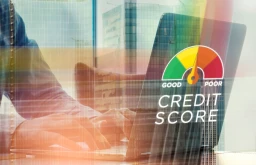What Are EMIs and Should Your Business Offer Them? A Complete Guide

As digital payments evolve in India, Equated Monthly Instalments (EMIs) have become one of the most popular ways for customers to make purchases especially big-ticket items. From electronics to education services, furniture, healthcare, travel, and even clothing brands, EMI adoption has skyrocketed.
But EMIs aren’t just convenient for customers they’re a growth enabler for businesses too. If you run a business, offering EMI payments can increase conversions, improve cash flow, and unlock new customer segments.
This article breaks down what EMIs are, how they work, why businesses should offer them, and how to set them up along with important considerations.
What Are EMIs?
An EMI (Equated Monthly Instalment) is a structured repayment plan where a customer pays for a product or service over monthly instalments instead of paying the full amount upfront.
Types of EMIs
Credit Card EMI
The bank converts a purchase into instalments either directly at checkout or later through the bank app.Debit Card EMI
Banks offer pre-approved limits based on transaction history and account balance patterns.BNPL (Buy Now, Pay Later) EMI
Fintech companies like Simpl, ZestMoney, Lazypay, and others offer short-term instalment plans.Consumer Loan EMI
Lenders give a standalone personal loan or merchant loan that customers use for a purchase.
Interest Rates & Tenures
Interest may vary from 0% (merchant absorbs cost) to 24%+ depending on lender.
Typical tenures range from 3 to 24 months, sometimes longer for high-value items.
How EMIs Work for Businesses
When a customer chooses EMI, the business gets the full payment upfront, while the customer repays the bank or lender over time.
There are two main models:
1. Merchant Subvention Model (Zero-Cost EMI)
Customer pays no interest.
Business pays the bank a “subvention fee” (usually 3%–12%).
Great for increasing sales volume.
2. Customer-Borne Interest Model
Customer pays interest directly to the bank/BNPL provider.
Business incurs no cost.
Useful for smaller merchants.
In both cases, the business receives funds immediately, making EMIs a risk-free cashflow tool.
Why Businesses Should Offer EMI Options
1. Higher Conversions
Many customers abandon purchases because the upfront cost seems too high. EMIs make the purchase psychologically and financially easier.
Businesses typically see:
20–40% increase in conversions for mid-range products
Up to 70% increase for high-value categories (e.g., electronics, furniture, courses)
2. Larger Average Order Value (AOV)
When customers can pay monthly, they are more likely to:
Upgrade to premium versions
Add extra features
Buy higher-value items
Leading to a higher AOV.
3. Broader Customer Base
EMIs appeal to:
Students
Young professionals
Customers with cashflow constraints
People without credit cards (via debit EMI / BNPL)
This expands your market significantly.
4. Improved Cash Flow for the Business
Even though customers pay in instalments, the business receives full payment upfront from the bank or EMI partner.
This means:
No waiting for monthly instalments
No collection risk
No EMI default risk on your balance sheet
5. Competitive Advantage
If a competitor offers EMI and you don’t, customers may choose them even for identical products.
Offering EMIs keeps your business relevant and competitive.
Should All Businesses Offer EMI?
EMIs are ideal if your product/service falls into at least one category:
Price above ₹2,500
One-time or high-value purchases
Courses / training / education
Real estate rentals / deposits
Health & medical services
Ecommerce stores
Electronics, appliances, jewellery
Subscription services
Even service-based businesses now offer EMIs because it improves accessibility.
If your business sells low-ticket FMCG items, EMIs may not be useful.
How to Set Up EMI Payments for Your Business
Setting up EMIs depends on the type of business and the payment provider you choose. Here's the process:
Step 1: Choose Your EMI Partners
Options include:
Banks (HDFC, ICICI, SBI, Axis, Kotak)
Payment gateways (Razorpay, PayU, Cashfree, Paytm)
BNPL providers (Simpl, ZestMoney, Lazypay)
POS machine EMI for offline stores
Most digital gateways integrate multiple banks and BNPL partners.
Step 2: Decide the EMI Types
Choose what to offer:
Credit card EMI
Debit card EMI
No-cost (zero-cost) EMI
Low-cost EMI
BNPL EMI
Step 3: Define the Tenure Options
Typical tenures:
3, 6, 9, 12 months
Up to 24 or 36 months for expensive goods
Step 4: Understand Fees
You may need to cover:
Subvention fees (for no-cost EMI)
MDR charges
Settlement fees from the payment gateway
Step 5: Integrate EMI Options at Checkout
For online stores:
Integrate with Shopify, WooCommerce, custom websites
Payment gateways provide EMI plugin or API integration
For offline stores:
Enable EMI on your POS terminal
Train staff to explain EMI options to customers
Step 6: Marketing & Communication
Promote EMI clearly:
On banners
On product pages
In-store posters
Social media ads
Checkout reminder
The clearer you communicate, the higher the conversion.
Risks & Considerations for Businesses
1. Subvention Costs
If offering zero-cost EMI, the merchant pays a percentage of the transaction.
2. Operational Integration
Ensure your payment gateway, accounting, and inventory management systems are aligned.
3. Customer Awareness
Many consumers do not understand EMI charges, interest, or processing fees. Clear communication reduces disputes.
4. Refund & Cancellation Policies
If a customer cancels an EMI order, banks charge reversal fees. Businesses must have a clear policy.
Additional Benefits & Opportunities
1. Boosting Brand Trust
Businesses offering EMI options appear more established and consumer-friendly.
2. Seasonal Sales Growth
During festivals, EMI offers significantly boost sales. Many brands tie up with banks for special offers.
3. Interest-Buyouts for Promotions
Brands sometimes absorb part of the interest to run zero-cost EMI campaigns. This works extremely well for new product launches.
4. Attracting Customers Without Credit Cards
Debit card EMI and BNPL EMIs open doors to millions of customers who traditionally could not access EMI benefits.
Conclusion
EMIs are no longer just a payment option: they are a strategic growth tool. They increase conversions, expand your customer base, boost average order value, and provide upfront cash flow while giving customers financial flexibility.
For most modern businesses; especially those selling tech, appliances, furniture, courses, or high-value services offering EMI options is not just beneficial, it is essential. With the rise of digital payments and BNPL platforms, enabling EMIs has become simpler, faster, and more cost-effective than ever.
Businesses that integrate EMI options today will be better positioned to attract, retain, and convert customers in an increasingly competitive marketplace.









